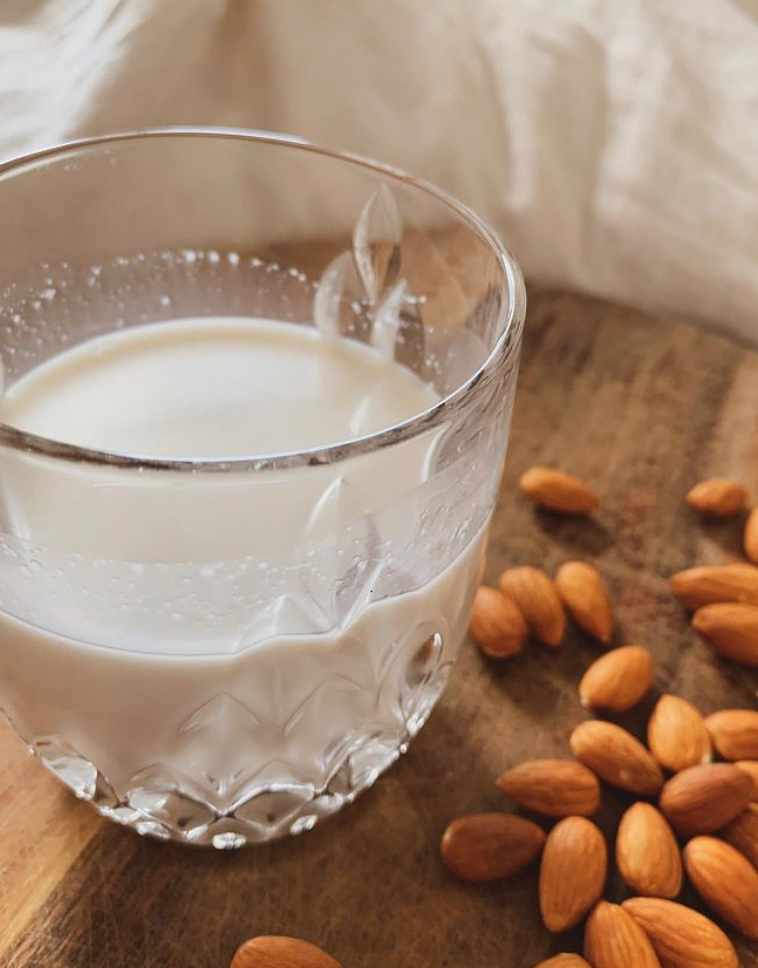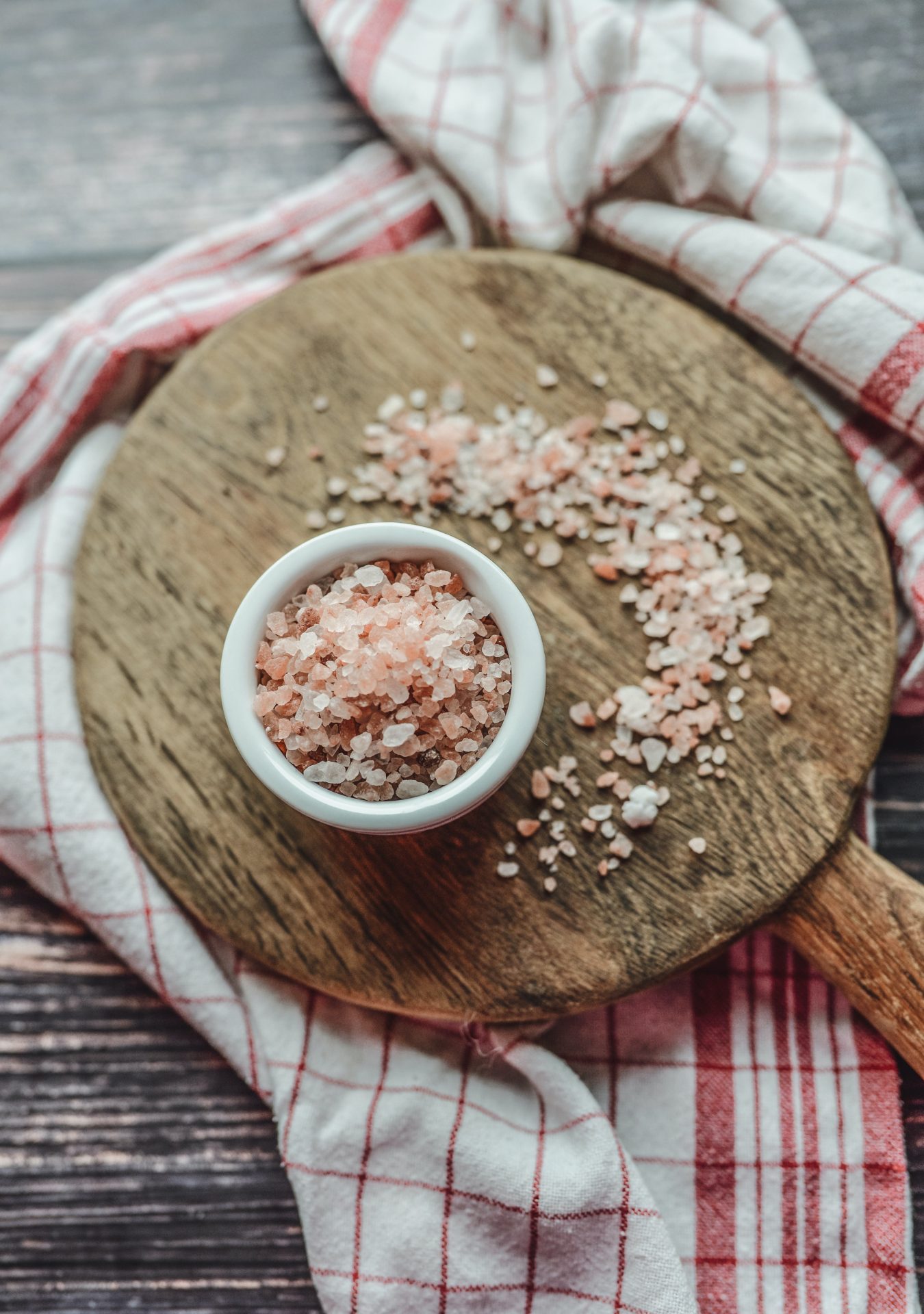For some women a change in their own diet while breastfeeding is necessary to support the health of their little one. A common reason for this is cow’s milk protein intolerance (CMPI), and for some sensitive babies they will also react to soy.
Having a baby with health issues can be overwhelming – let alone needing to change your diet – so we thought we would break down some simple swaps you can make if you need to follow a dairy free and soy free diet.
Dairy
“Dairy” is an umbrella term for foods such as milk, cream, butter, cheese and dairy derived proteins (or any products made from these). For some people it will only be necessary to restrict dairy products from cows, but for the purpose of this article we are going to remove dairy from all mammalian sources (goat, sheep, buffalo etc).
Some foods fairly obviously contain dairy. These include:
-
Milk, including full cream, skim, no fat, condensed, evaporated, buttermilk, lactose free
-
All hard and soft cheeses, including cottage cheese, cream cheese, cheddar, parmesan
-
Cream, including sour cream and crème fraiche
-
Custard
-
Yoghurt, including plain, flavoured, frozen, drinking, kefir
-
Butter, margarine and ghee
-
Ice cream
-
Milk chocolate
-
Non-fat milk products
-
Any food that contains any of these as an ingredient.
Many other foods will contain dairy or dairy derived ingredients, so you will need to get friendly with the ingredient labels on any products that you cook with or consume. Common ingredients containing dairy include:
-
Butter
-
Cheese
-
Cream
-
Yoghurt
-
Whey
-
Curd
-
Milk solids
-
Milk powder
-
Lactoglobulin
-
Casein
-
Lactalbumin
-
Sodium caseinate
Some common packaged foods that can contain dairy that you may not expect include:
-
Potato chips
-
Sauces
-
Some breads – particularly gluten free
-
Packet soups
-
Baked goods
-
Snack bars
-
Granola
-
Confectionary
-
Deli meats
Thankfully as dairy is considered to be an allergen it should be clearly labeled on the food product and many food manufacturers will use the term “dairy free” somewhere on the label. If you or your child need to follow a dairy free diet, then you will also need to avoid lactose free products. While these don’t contain lactose (the sugar portion of milk) they still contain the milk protein which is the allergenic component of dairy.
Soy
A soy free diet will require the elimination of soybeans and any food derived from soy beans. Like dairy, there are some obvious soy containing foods including:
-
Soy milk
-
Soy sauce and tamari
-
Tofu or bean curd
-
Tempeh
-
Edamame beans or soybeans
-
Miso
-
Soy protein (soy protein isolate)
-
Soy flour
-
Soy grits
-
Textured vegetable protein (TVP)
-
Soy cheese
-
Soy yoghurt and ice cream
-
Soy mayonnaise
There are many other ingredients that MAY indicate the presence of soy (but not always). Again, it is important to familiarise yourself with ingredient labels, and if in doubt contact the manufacturer or choose another option. Some of the more hidden ingredients include:
-
Flavouring/natural flavouring
-
Hydrolyzed vegetable protein
-
Vegetable broth
-
Vegetable gum
-
Vegetable starch
Typically soy lecithin and soybean oil are tolerated by those who have a soy allergy or intolerance as they do not contain any of the soy protein which is the allergenic portion of the food.
Some common packaged foods that can contain soy that you may not expect include:
-
Some breads – particularly gluten free
-
Baked goods
-
Cereals
-
Chocolates and confectionary
-
Mayonnaise and other dressings
-
Premade stock/broth
-
Packet soups
-
Meat alternatives
-
Vegan alternatives
-
Icecream
Like dairy, soy is considered to be an allergen and should be clearly labeled on the food product.
Substitutes
Milk – swap to rice milk, nut milk, coconut milk or oat milk
Butter – swap to avocado, nut butter, olive oil, tahini
Cheese – swap to nut based cheeses or homemade cashew cheese
Yoghurt – swap to coconut yoghurt
Ice cream – swap to coconut milk ice cream or sorbet
Chocolate – swap to plain dark chocolate (some of the flavoured varieties may contain dairy or soy)
Soy sauce – swap to coconut aminos
Foods naturally free from dairy and soy
-
Meat
-
Chicken
-
Fish
-
Eggs
-
Nuts and seeds
-
Rice/quinoa/buckwheat/barley
-
Oats
-
Wheat/spelt/rye
-
Herbs and spices, salt and pepper
-
Fruit
-
Vegetables
-
Legumes (except soybeans)
-
Fats and oils: Avocado, nuts, flaxseed oil, extra virgin olive oil, coconut oil
-
Drinks: Water, tea, coffee, fresh juices, coconut water
An example day of eating on a dairy and soy free diet
Breakfast: Oat bircher muesli with coconut milk, berries, nuts and seeds
OR spelt sourdough toast with scrambled eggs and avocado
Lunch: Salad with chicken, baby spinach, quinoa, roast veggies, pepitas and avocado
OR rice paper rolls with rice noodles, carrot, cucumber, capsicum, avocado, prawns and coconut aminos
Dinner: Slow cooked beef brisket with sweet potato mash and broccoli
OR lentil dahl with rice and steamed zucchini
Snacks: Veggie sticks with hummus, protein smoothie with pea protein, banana and almond butter, chia pudding with coconut milk, piece of fruit or punnet berries, 2 squares of dark chocolate
Drinks: 2L of water, herbal tea, coffee with oat milk
A note on calcium
Removing dairy and soy from your diet may lead to a reduced intake of calcium. It’s important to regularly consume calcium-rich foods which are free from dairy and soy, such as – calcium fortified nut/rice/oat/coconut milks, nuts, seeds, legumes, leafy greens, tinned salmon and sardines (with bones) and tahini. Some women may need a calcium supplement, see a health professional for individual advice.
As daunting as it can seem, keeping things simple will be your easiest option. Try to eat as many home cooked meals as possible and stock your pantry with safe snacks and ingredients so you know you have plenty of options on hand. Take it week by week – you may need to follow an initial period of strictness, but trust that it won’t necessarily be forever, and as you move through the changes you will become more confident and savvy with the types of foods you can eat.
You might like to avoid eating out in the early weeks, or suggest restaurants or cafes where you know you’ll be able to get some simple, suitable meals – for example a pub where you can get steak, mash and veggies or a cafe where you can order eggs and avocado on toast.
Shift your mindset. Rather than focusing on all of the things that you CAN’T have, start looking to all of the things that you CAN have, and the improvements you are offering to your baby. Inevitably there will be a period of adjustment that might feel clunky and like a lot of effort, but soon you won’t even remember how you ate before and will have an array of choices that feel easy and nourishing.
A final note… brands have been known to change their ingredients from time to time, so make sure you regularly check the ingredients, even on products you have been using for a while. We haven’t listed any specific brands in this post for this reason, but you may like to comment some of your favourites below so other mums can check them out! x
Plant milks
Are you confused by all of the plant-based milks on the market? What should you be looking for and what should you avoid?
Well, it depends on a few things – your individual needs, values and taste preferences. The right milk for you and your family may not be the right milk for someone else. Swipe across for some tips and advice on what to consider when choosing your plant-based milk.
When opting for a non-dairy milk, keep in mind that many of them are predominantly water. Plant milks don’t tend to pack the same nutritional punch as dairy milks, but they can still be a great inclusion for those who choose to avoid or minimise cow’s milk for their family. Here are some things to consider…
Calcium
If you/your family don’t eat dairy or other calcium-rich foods regularly (tinned sardines/salmon, chickpeas, firm tofu, chia seeds) it may be wise to choose a plant milk that is fortified with calcium. There are currently no plant milks that are naturally rich in calcium.
Look for 100-120 mg of calcium per 100ml (250-300 mg per 250 ml serve)
Protein
If your protein intake could do with a boost, choosing a plant milk that is high in protein might be right for you.
Soy milk = 7-10 g protein per 250ml (look for one made from ‘whole soy beans’)
High protein almond/oat milk = 10g per 250ml (Note – these milks have added protein, usually pea or soy. Check for other ingredients like added sugar)
As a comparison, almond and oat milk usually contain <2g protein per 250ml. Rice and coconut milk typically contain <1g protein per 250ml.
Sweetness
Ideally we want to look for a plant milk that is unsweetened. This means there is no added refined sugar, however there could still be a gentle sweetness from ingredients like tapioca, barley malt or brown rice.
Added ingredients
If you prefer to avoid seed oils, choose a plant milk with no oil or opt for olive oil or hi oleic sunflower oil.
If you try to avoid gums and preservatives, don’t purchase milks containing ingredients such as gellan gum, xanthan gum, vegetable gum, emulsifiers and acidity regulators.
Some plant milks contain only the nut/grain, water and salt. Just keep in mind that these types of plant milks will not contain calcium or protein (and they don’t typically froth well if that’s important to you).
Are additives bad?
Not necessarily.
Oils are added to improve the texture, taste and to ensure the milk will foam. It will also make the macronutrient profile more similar to cow’s milk.
Other additives such as thickeners, gums and flavours are added to achieve a thicker and smoother texture while giving the milk a longer shelf life.
Vitamins/minerals are added to help fill nutritional gaps. The most common is calcium, but some plant milks are fortified with iodine, vitamin B12 and vitamin D. This can be helpful for some people.
Some brands that we like include:
- Oat milk goodness
- Oatly
- Bonsoy
- Pure Harvest
- Almo
- Madame tiger
- Nutty Bruce
- Flora foods
Be mindful within these brands, as some varieties (such as the barista blends or flavoured varieties) may contain ingredients that aren’t preferred. Use your own knowledge and discretion.
WRITTEN BY:
Kate Holm (Naturopath & Nutritionist)
REVIEWED BY:
Luka McCabe (RN/RM/Nutrition Consultant)
Renee Jennings (Dietitian and Nutritionist, APD)







+ show comments
- Hide Comments
add a comment